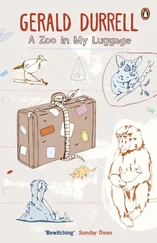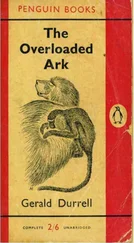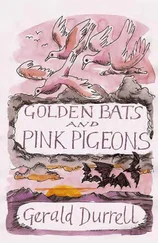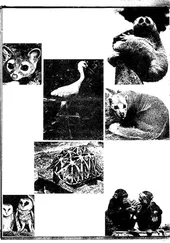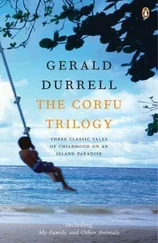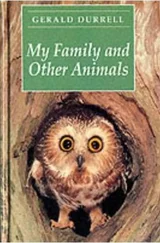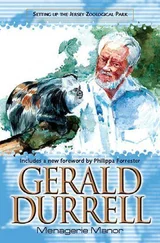Gerald Durrell - THREE SINGLES TO ADVENTURE
Здесь есть возможность читать онлайн «Gerald Durrell - THREE SINGLES TO ADVENTURE» весь текст электронной книги совершенно бесплатно (целиком полную версию без сокращений). В некоторых случаях можно слушать аудио, скачать через торрент в формате fb2 и присутствует краткое содержание. Жанр: Современная проза, на английском языке. Описание произведения, (предисловие) а так же отзывы посетителей доступны на портале библиотеки ЛибКат.
- Название:THREE SINGLES TO ADVENTURE
- Автор:
- Жанр:
- Год:неизвестен
- ISBN:нет данных
- Рейтинг книги:3 / 5. Голосов: 1
-
Избранное:Добавить в избранное
- Отзывы:
-
Ваша оценка:
- 60
- 1
- 2
- 3
- 4
- 5
THREE SINGLES TO ADVENTURE: краткое содержание, описание и аннотация
Предлагаем к чтению аннотацию, описание, краткое содержание или предисловие (зависит от того, что написал сам автор книги «THREE SINGLES TO ADVENTURE»). Если вы не нашли необходимую информацию о книге — напишите в комментариях, мы постараемся отыскать её.
THREE SINGLES TO ADVENTURE — читать онлайн бесплатно полную книгу (весь текст) целиком
Ниже представлен текст книги, разбитый по страницам. Система сохранения места последней прочитанной страницы, позволяет с удобством читать онлайн бесплатно книгу «THREE SINGLES TO ADVENTURE», без необходимости каждый раз заново искать на чём Вы остановились. Поставьте закладку, и сможете в любой момент перейти на страницу, на которой закончили чтение.
Интервал:
Закладка:
Anteaters belong to a group of animals that do not possess teeth; instead they are furnished with a long tongue and sticky saliva with which to pick up their food, a tongue that acts on the principle of a flypaper. So each time the anteater whipped his tongue back into his mouth it carried with it a certain amount of egg, milk, and chopped meat.
Even by this laborious method it did not take him long to clean up the mixture, and when he had finished he sniffed around the bowl for some time, to make sure he had not overlooked any. Then he went and lay down, curled himself up, spread his tail over himself like a tent and sank into a contented sleep. From that moment on he was little or no trouble to look after.
Some weeks later, when we were back in Georgetown , we got a mate for Amos, as we called him. A pair of slim, well dressed East Indians arrived one morning in a sleek new car and asked us if we wanted a barim (the local name for the giant anteater). When we replied that we certainly did, they calmly opened the boot of the car, and inside, tied up with masses of rope, was a full-grown female anteater. As a conjuring trick it was considerably more impressive than producing a rabbit out of a hat. However, the creature was very exhausted and had several nasty cuts on her body and legs; we were a bit doubtful whether she would survive. But after some first aid to her wounds, and a long drink she revived enough to attack us all in a very determined manner, and so we thought she was well enough to be introduced to Amos.
Amos was living in a spacious, fenced-in pen under the trees. When we opened the door of his pen and introduced the pointed end of his bride-to-be he greeted her with such an ungentlemanly display of hissings, snuff lings and waving of claws that we hastily removed her to safety. Then we divided Amos's pen with a row of stakes and put his wife next door to him. They could see and smell each other through this division, and we hoped that constant sniffing would bring about a more tender feeling on the part of Amos.
The first day the female worried us by refusing the substitute food completely. She would not even sample it.
The next day I had an idea, and I pushed Amos's feeding bowl right up against the dividing fence at breakfast time. As soon as the female saw (and heard) him eating his meal she went across to investigate. Obviously Amos was enjoying whatever it was, so she poked her long tongue through the bars and into his bowl. Within ten minutes they had finished the food between them. So, every day, we were treated to the touching sight of Amos and his wife, separated by bars, feeding lovingly out of the same bowl. Eventually she learnt to eat out of her own dish, but she always preferred to feed with Amos if she could.
When I landed Amos and his wife at Liverpool , and saw them driven off to the zoo they were destined for, I felt considerable pride at having landed them safely, for anteaters are not the easiest of creatures to keep in captivity.
CHAPTER SIX
Capybara and Cayman
Our fortnight in the Rupununi passed so quickly that we were surprised one night when we discovered, swinging in our hammocks and calculating on our fingers, that we had only four days left.
Owing to the efforts of McTurk and the local Amerindians our collection had increased considerably. A few days after catching the anteater, Francis arrived on horseback, carrying a sack that squeaked and twitched as though it was full of guinea-pigs, but I soon found this noise came from three young and very alarmed capybara. I have mentioned these creatures before, in describing the ferocity of piranhas, but their chief claim to fame is that they are the largest of living rodents. This means nothing unless you compare them with one of their smaller relations, and then you get some idea of their size. A full-grown capybara measures about four feet in length, stands two feet high, and can weigh nearly a hundredweight. Compare this bulk with, say, the English harvest mouse, which measures four and a half inches including the tail and weighs about one-sixth of an ounce.
This enormous rodent is a fat, elongated beast clad in harsh, shaggy fur of a brindled brown colour. Since its front legs are longer than its back ones, and it has an ample rump with no tall, the capybara always looks as though it is on the point of sitting down. It has large feet, with broad, webbed toes, and on the front ones the nails are short and blunt, looking curiously like miniature hooves.
Its face is very aristocratic: a broad, flat head and the blunt, almost square, muzzle giving it a benign and superior expression like a meditative lion. On land the capybara moves with a peculiar shuffling gait or a ponderous, rolling gallop; but once in the water it swims and dives with astonishing ease and skill. A slow, amiable vegetarian, it lacks the personality displayed by some of its relatives but makes up for it by a placid and friendly disposition.
The three youngsters that Francis had brought were, however, anything but friendly; they kicked and squeaked and regarded us with bulging eyes, as though we were a troop of jaguars.
They were only about two feet long and a foot high, but they were compact and muscular, and when they bucked and kicked they were quite a handful. I noticed that they never attempted to bite, although they were armed with large bright orange incisors, as sharp and about as large as a penknife blade. They could have inflicted very nasty wounds with these teeth if they had wanted to. After a considerable struggle we got them out of the sack, and then we stood around foolishly, our arms full of squeaking capybara, wondering what to do with them, for we had forgotten that we had no cage in which to put them. We solved this problem, after much debate, by making them tiny harnesses out of string, the same type of thing we had made for the anteater. Then we tied them up on long cords to three orange trees and stood back to admire our handiwork. The capybara, finding themselves free but still close to us, rushed towards one another for protection and got their cords entangled round themselves and the trees. A quarter of an hour later we had disentangled them from one another, from the trees and from our own legs and retted them to trees further apart. This time they ran round and round the trees, squeaking hideously, until the trunks were covered with string and the beasts nearly strangling. At last we solved the problem by tying the ends of their strings to branches high above them; this gave them a considerable area to run about in but prevented them from getting tied up and strangling.
"I bet that won't be the last bit of trouble we have with them," I said gloomily as we finished.
"Why?" asked Bob, "I thought you didn't seem very pleased to see them. Don't you like them?"
"I had a rather trying introduction to capybara in Georgetown ," I explained, "and it has put me off the family."
It had happened when Smith and I were staying in a boarding house in the back streets of Georgetown while we were looking round for a place in which to establish a base camp.
Our landlady had very kindly told us that we might use her front garden in which to keep any specimens we got in the meanwhile, and we took her at her word. I don't think the poor woman quite realized what her invitation would entail, but as her tiny garden began to get overcrowded with monkeys and other creatures, and we still had not found a base camp, she began to look a little worried. Even we were beginning to feel that the garden was getting a bit congested, for the other guests had to pick their way into the house with great care if they did not want to have their legs seized by an inquisitive monkey. With the arrival of the capybara things came to a head.
A man led the huge rodent in on a string late one evening.
Читать дальшеИнтервал:
Закладка:
Похожие книги на «THREE SINGLES TO ADVENTURE»
Представляем Вашему вниманию похожие книги на «THREE SINGLES TO ADVENTURE» списком для выбора. Мы отобрали схожую по названию и смыслу литературу в надежде предоставить читателям больше вариантов отыскать новые, интересные, ещё непрочитанные произведения.
Обсуждение, отзывы о книге «THREE SINGLES TO ADVENTURE» и просто собственные мнения читателей. Оставьте ваши комментарии, напишите, что Вы думаете о произведении, его смысле или главных героях. Укажите что конкретно понравилось, а что нет, и почему Вы так считаете.


